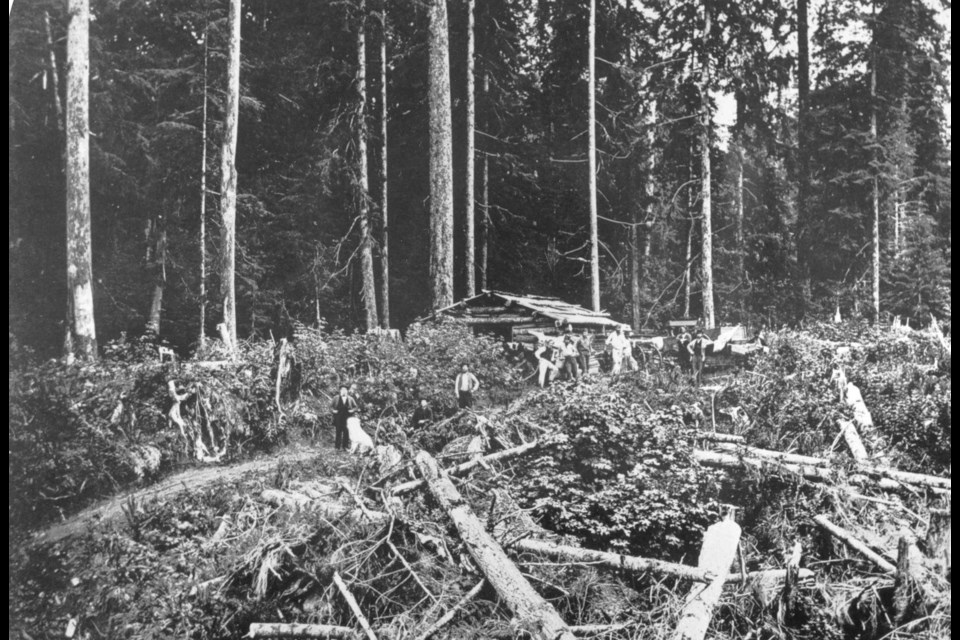Logging, literally and metaphorically, built Vancouver.
The first settlers here started a mill. Gastown, the first settlement in what would become Vancouver, was built around Hastings Sawmill. That meant plenty of quality lumber to build new structures and jobs.
While there isn't really any old-growth forest left in the city now, it once had a fairly dense forest .
Nowadays most of B.C.'s lumber industry operates in more remote locations around the province, but in the 1860s, 70s, 80s and 90s, there were still large trees around Vancouver, so lumberjacks didn't have to go far to find what they were looking for, especially with how difficult it was to move trees.
Typically, after a tree was cut down in Vancouver, it was hauled out of the woods to a logging camp by a small team of oxen.
Larger teams of oxen would then haul more logs down skid roads. They were trails through the forests built using logs; it made it easier to drag the recently harvested trees (imagine dragging a huge, heavy tree down a mud path in Vancouver).
Given the size of trees in Pacific Spirit Park and Stanley Park nowadays, it's easy to imagine the size and density of the forest that covered all of Vancouver.
These historic photos show some of the tree-felling and lumber operations around the area before Â鶹´«Ã½Ó³»grew to the metropolis it is today. Areas in the photos include the West End, Kitsilano, and downtown Vancouver.



